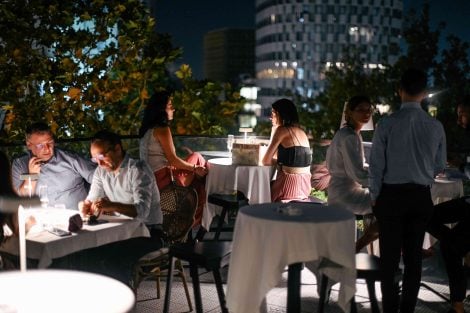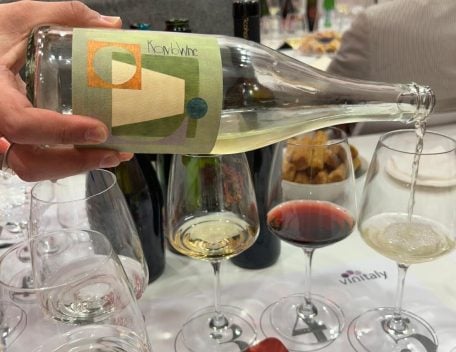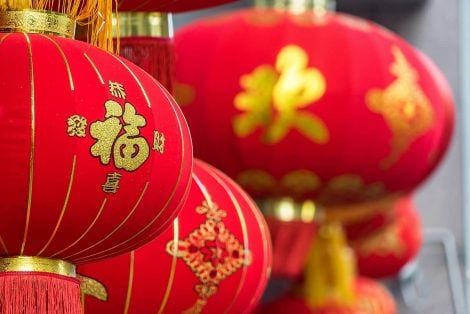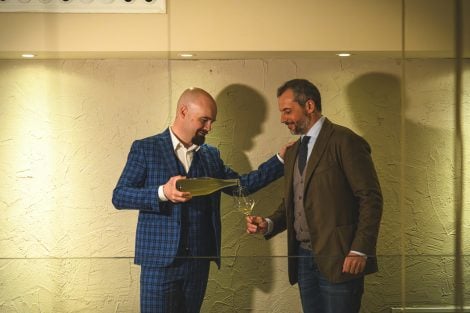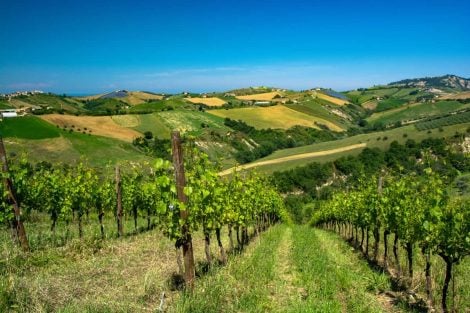Among the most renowned white grape varieties of Friuli Venezia Giulia, Ribolla Gialla – often regarded as a native variety of the region – has long been at the centre of debates regarding its origin. The name appears in documents dating back to the 13th century, though it likely referred not so much to a grape but rather to a wine that enjoyed great success at the time. However, recent studies on the grape variety have aimed to shed light on its provenance.
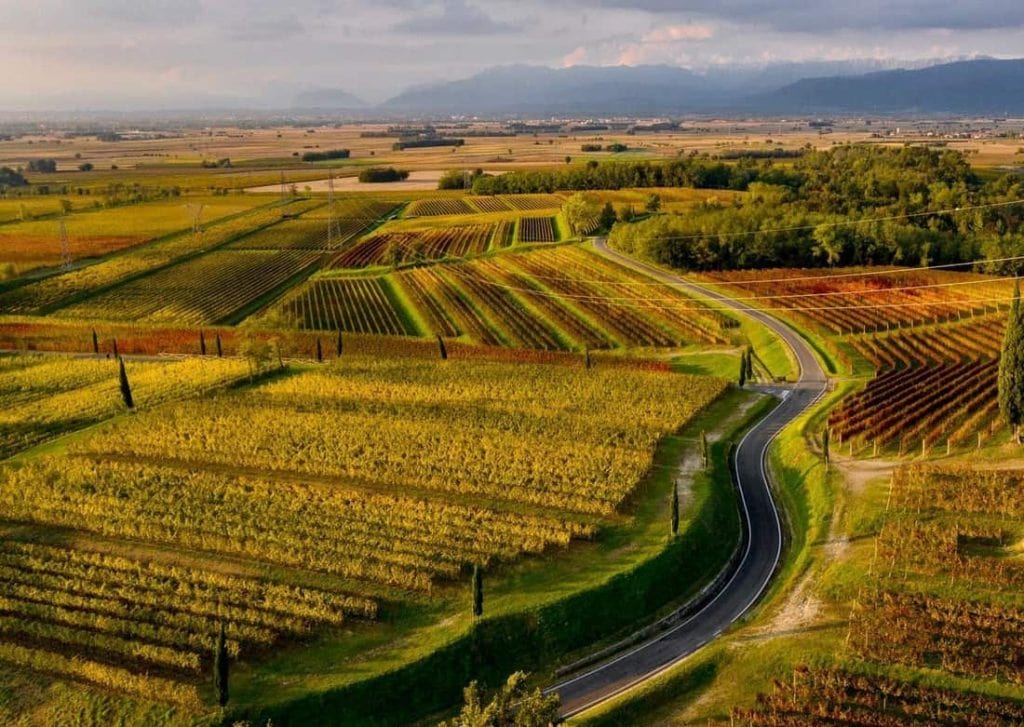
Colli Orientali del Friuli
The origins of Ribolla: between genetics and geography
Given that Ribolla Gialla and Slovenian Rebula are genetically the same variety, the theory of its origin being on the border between Italy and Slovenia has gained ground. This hypothesis has been confirmed by DNA studies, which place Ribolla Gialla within the elite club of noble European grape varieties that includes Traminer, Pinot, and the almost extinct ancestor Gouais Blanc, as narrated by Prof. Attilio Scienza and Serena Imazio in La Stirpe del Vino (Sperling & Kupfer, 2018). This disproves the theory that the grape arrived via Venetian trade routes from the island of Cephalonia, where Robola is currently grown – a variety genetically unrelated to the grape cultivated in Friuli Venezia Giulia and Slovenia.
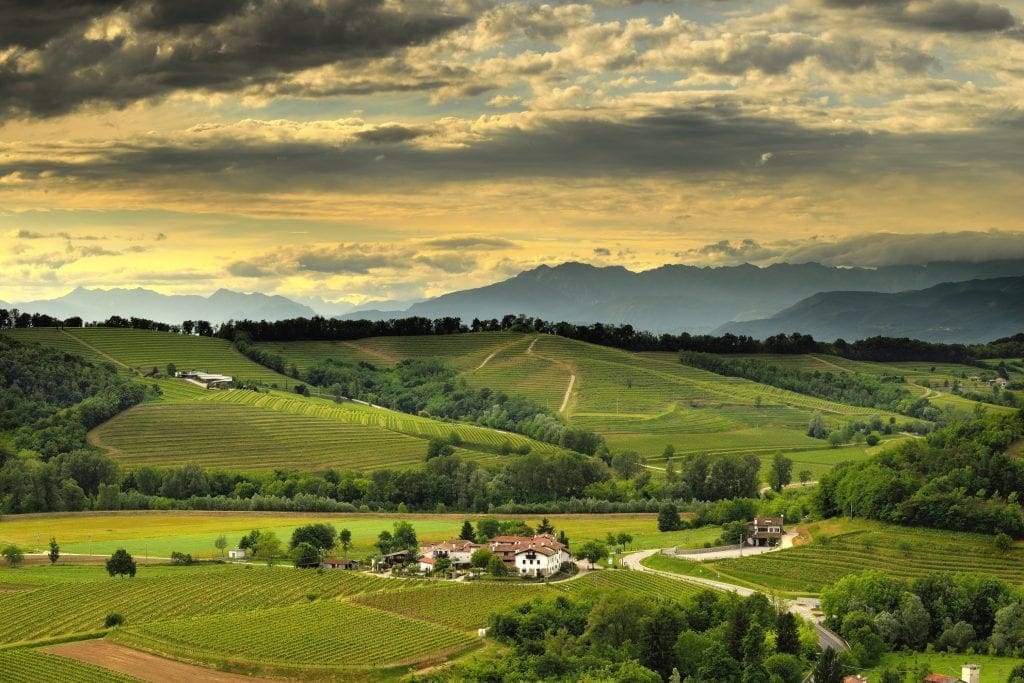
Collio
The original growing area of Ribolla Gialla is limited and largely corresponds to the zones where it is still widely grown today: it stretches between Collio and the Colli Orientali del Friuli along the Italian-Slovenian border, including the areas of Rosazzo, Oslavia, Cormòns, and San Floriano del Collio. Here, the soils – composed of marl and sandstone, locally known as ponca – and the significant temperature variations lend the wine its typical mineral freshness and its ability to evolve over time.
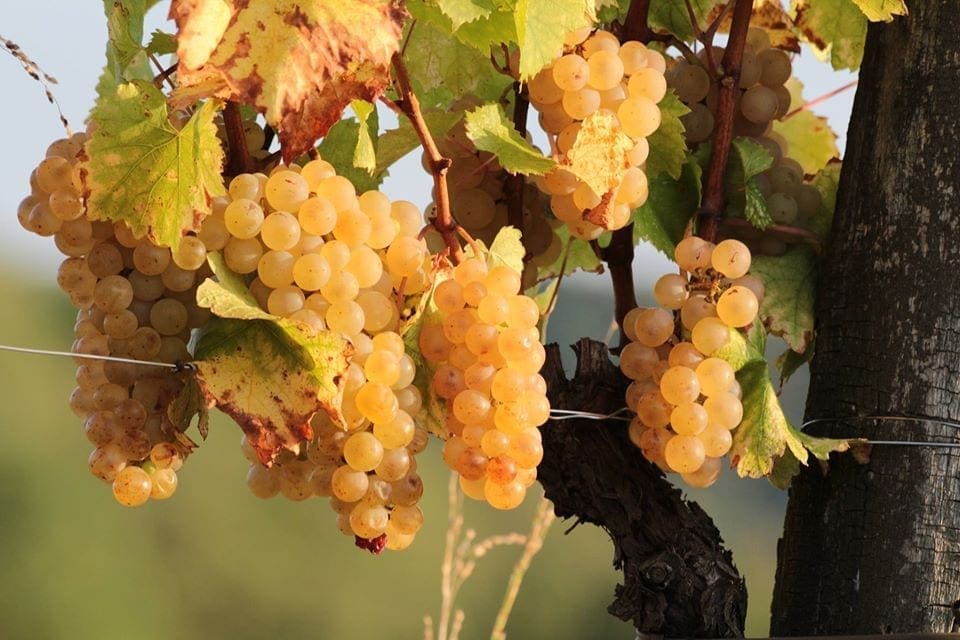
The history of Ribolla: rise and decline
Ribolla was one of the most successful wines during the Middle Ages (though it was likely not produced solely from the grape variety whose genetic history we've traced); its popularity began to decline starting in the 19th century, when phylloxera crises and the reorganisation of viticulture after Italy's unification led Friulian growers to focus on more productive and easier-to-grow varieties.
In the early decades of the 20th century, Ribolla was progressively supplanted by international varieties such as Pinot Grigio, Sauvignon, or Tocai Friulano. Its rustic character, high acidity, and somewhat subdued aromas made it less appealing in a market that demanded more immediate wines.
By the 1970s, it had almost disappeared. It survived only in small plots, mostly cultivated by traditional producers or pioneering winemakers who believed in the grape’s strong identity.

The rebirth of Ribolla: between orange wine and oenological precision
The real renaissance of Ribolla Gialla began in the 1990s, parallel to two key movements: on one hand, the rediscovery of amphora and skin-contact winemaking – especially in the Oslavia area – thanks to producers like Josko Gravner and Stanko Radikon; on the other hand, a more technical and controlled approach in the Colli Orientali and Collio, which enhanced the white, fresh, and vertical expression of the variety. In short, this is a grape that has crossed centuries and borders without ever losing its voice, carving out a unique place in the grand story of Italian viticulture.
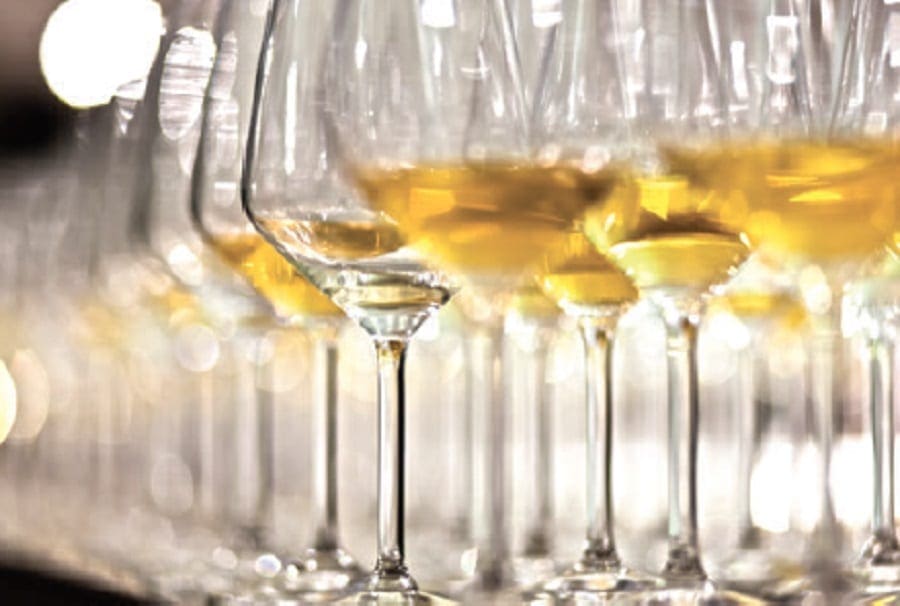
The Ribolla Gialla wines with the best quality-price ratio
In the following list, you'll find Ribolla Gialla wines offering the best quality-price ratio, evaluated and reviewed in the Berebene 2025 and Vini d’Italia 2025 guides by Gambero Rosso.
The historic Formentini winery, now part of the Gruppo Italiano Vini, has been active since 1520 and stands as one of the prominent names in Collio. Its wines highlight both native and well-acclimated international grape varieties. Few labels, elegant and well-defined, truly express the territory. The Ribolla Gialla ’23 is excellent, with notes of hay and golden apple, offering a deep and satisfying sip.
Borgo San Daniele is named after the place that houses the winery and the ancestral home of grandfather Antonio, who in 1990 left several hectares of vineyard to his grandchildren Mauro and Alessandra Mauri. Few but meticulously crafted labels showcase the full potential of the territory. Their Ribolla Gialla ’22 confirms its excellent quality-price ratio, delivering great tension and character with fruit-driven aromas and an enveloping mouthfeel.
The winery owned by Igor Erzetic is named after his father Branko, who founded it in 1950 with a visionary belief in the area’s potential. Thanks to Igor, the small venture has become a benchmark for white wine enthusiasts of Collio. Most vineyards surround the winery itself. Its small size and limited production allow Igor to dedicate great care to both the vines and the winemaking process. We recommend the Ribolla Gialla for its excellent quality-price ratio.

Overlooking the Slovenian border, the Gorizian hamlet of Oslavia is home to many prestigious wineries, built by hardworking farmers proud of their land and vineyards. The Figelj family has lived and worked here for over two centuries. The new generation – Martin, Robert, and Matej – has embraced the family’s philosophy based on low yields and eco-friendly practices, with complete respect for nature and environmental sustainability. The sample we tasted confirmed the consistently high quality of both their white and red wines. We recommend the Ribolla Gialla for its excellent value.
The first label bearing the Alessio Komjanc name dates to 1973, but the family’s winemaking history goes back to the late 19th century. A major turning point came in 2000 when all four of Alessio’s children joined the business, optimising the entire production process. The qualitative leap seen in recent vintages – supported by valuable consultancy in the cellar – has significantly boosted the overall quality, bringing the family name into the spotlight. We recommend the Ribolla Gialla for its excellent quality-price ratio.
In the hills of Dolegna del Collio, the Bernardis family has nearly a century-long tradition in viticulture. The early 1980s marked a shift, when Giuseppe Bernardis and his wife Norina Pez formally founded their winery in her name. They succeeded in establishing a solid enterprise, now managed entirely by their son Stefano, who uses only estate-grown grapes. We recommend the Ribolla Gialla for its excellent value.
The young and enterprising Ivan Sosol has bold projects, visions, and dreams. In 2019, he decided to take over and cultivate his grandfather’s vineyards, located on the border between Collio and Brda. He employs ancestral methods in line with local tradition. We recommend the Ribolla Gialla for its excellent value.
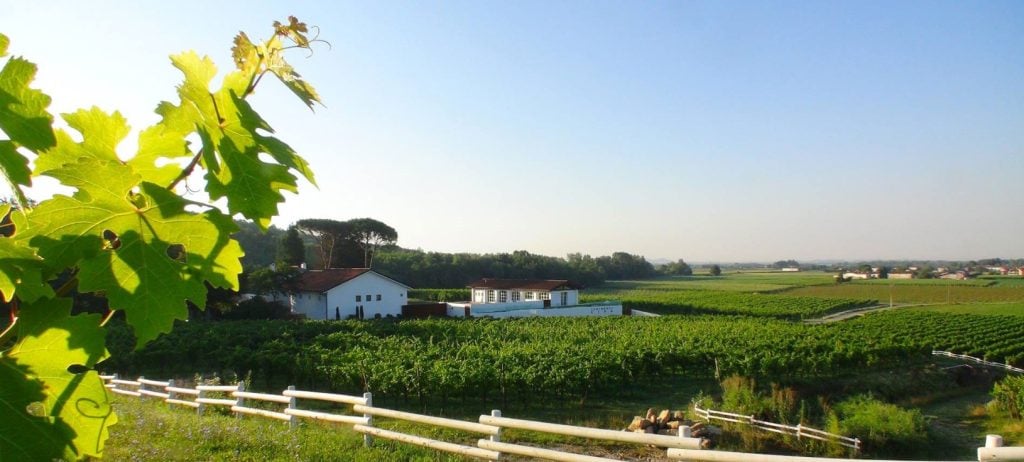
photo by www.facebook.com/tenimenticiva1/
In 2016, Valerio Civa decided to invest his extensive wine industry experience into acquiring a winery and numerous vineyards in Bellazoia and surrounding areas, giving rise to Tenimenti Civa. Since 2021, the new 4.0 headquarters in Povoletto has been operational. This highly innovative winery features a sophisticated digital management system that tracks every activity and translates the data into insights for optimal production efficiency. This year, Ribolla Gialla was presented in a wide array of styles, from the prestigious Colli Orientali grapes to sparkling versions from the plains. We recommend the Ribolla Gialla Cuvée Biele Zôe Brut ’22 for its excellent value.
For Roberto Snidarcig, expanding from a single hectare to today’s success was a giant leap. In 1991, together with his wife Sandra, he founded his winery and named it Tiare, as a tribute to the land that made it all possible. Today, it’s one of the most acclaimed names in regional winemaking, showcasing the full potential of Dolegna del Collio. The Ribolla Gialla ’23 is spectacular – fragrant both on the nose and palate, with an aroma complexity that far exceeds the average.
Patrizia Felluga, after years working in her father’s winery, decided in 2001 to start her own venture, involving her very young children Antonio and Caterina. The result is a winery that conveys both style and sense of place in its wines. A perfect example is the Ribolla Sodevo ’23, with a decisive palate, preceded on the nose by ripe fruit, golden apple, and rosemary-like balsamic notes, finishing dry and clean.
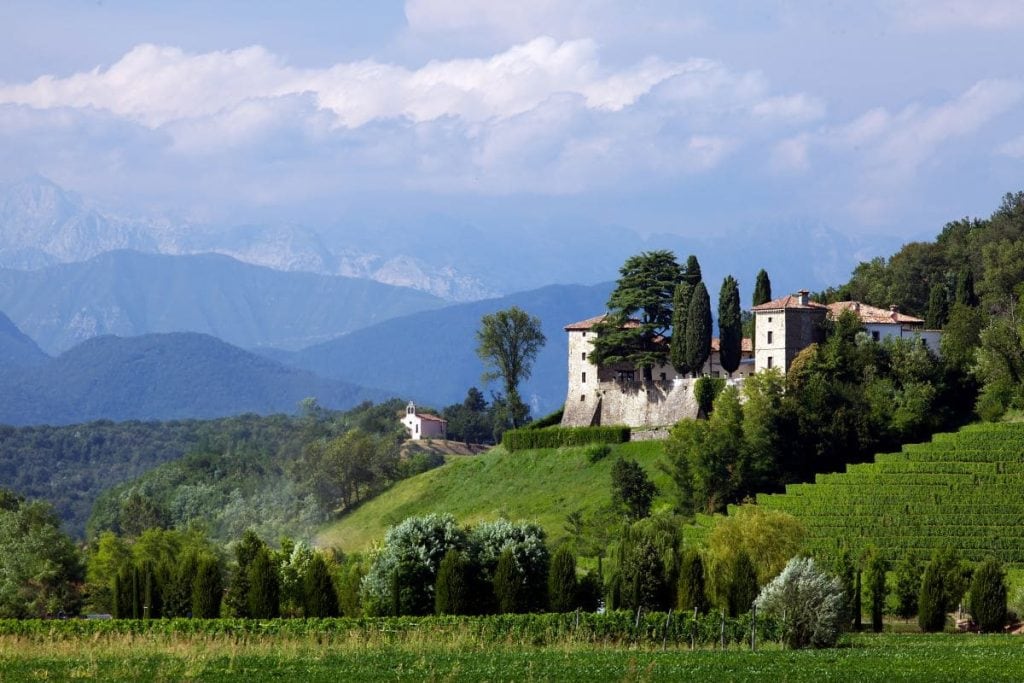
The Castello di Buttrio estate was purchased by Marco Felluga in 1994, who immediately began transforming it into a winery before handing it over to his daughter Alessandra. With a patient restoration, Alessandra brought the ancient castle – now housing the winery – back to its former glory. The wines are enjoying further growth, driven by the enthusiasm of the new generation and valuable collaboration with Donato Lanati. We recommend the Ribolla Gialla for its excellent value.
The Ermacora family, with visionary foresight, chose the hills of Ipplis in the early 20th century to plant their vineyards, recognising the potential of the Eocene-origin clay-limestone soils – low in fertility but rich in minerals – for producing top-quality wines. The business has been passed down through generations. Today, Dario and Luciano lead the company, with the next generation ready to take over. The entire wine range performed exceptionally this year, making the Ribolla Gialla an easy recommendation.
Selected in 1986 by Luigi Veronelli among the top 50 historic Italian winemakers, Perusini is now run by Teresa Perusini, who remains committed to family values and preserving biodiversity. The FCO Ribolla Gialla ’23 invites sipping with aromas of green apple, white flowers, and lemon peel. Light and easy-drinking, its strength lies in a well-balanced freshness that adds rhythm and progression on the palate.
Paolo Rodaro, a bold and dynamic wine artisan, is constantly seeking new inspiration despite already achieving significant success. He has long featured a prestigious line named Romain, which includes powerful red wines. Now, together with his wife Lara, he’s focusing on Metodo Classico Pas Dosé sparkling wines – the new pride of the winery. However, here we recommend the Ribolla Gialla Fiore ’22 for its excellent value.
Torre Rosazza is a historic estate based in Manzano, within the 18th-century Palazzo De Marchi, perched atop a hill surrounded by vineyards arranged across two beautiful, sun-drenched natural amphitheatres. The Ribolla ’23 has aromas of yellow-fleshed fruit and yellow flowers. The palate is fresh and characterful, with a smooth sip and a pleasantly savoury finish.


 "The universal wine glass? It doesn’t exist. Only shortcut-lovers believe in it." So says Maximilian Riedel
"The universal wine glass? It doesn’t exist. Only shortcut-lovers believe in it." So says Maximilian Riedel A strong start for Italian wine exports in 2025. In January, the stockpiling effect in the US ahead of tariffs proves decisive
A strong start for Italian wine exports in 2025. In January, the stockpiling effect in the US ahead of tariffs proves decisive The leap in quality of the new Piwi wines across 15 labels
The leap in quality of the new Piwi wines across 15 labels Valpolicella welcomes back one of its most iconic wines: rebellious yet loyal, Grola returns to the DOC
Valpolicella welcomes back one of its most iconic wines: rebellious yet loyal, Grola returns to the DOC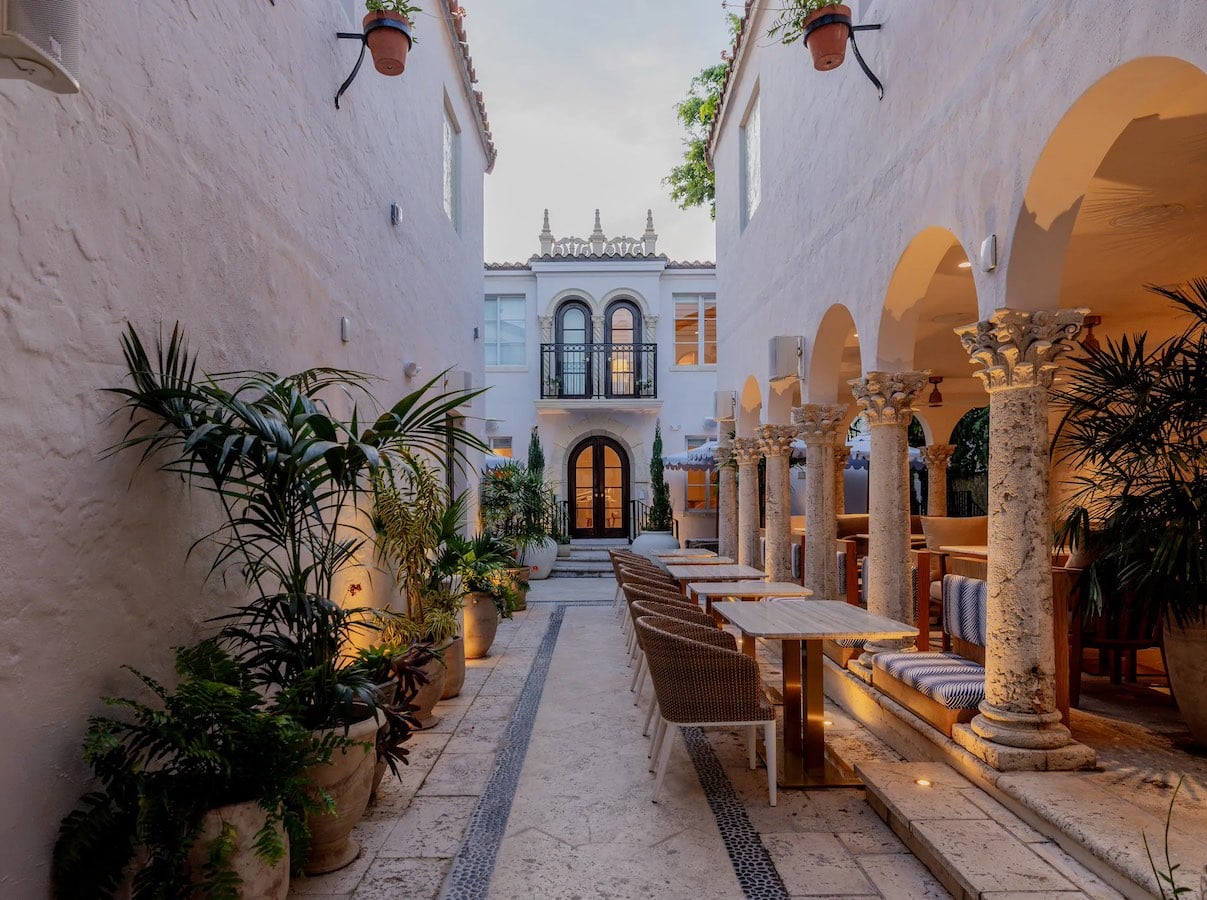 Versace opens a super hotel with an Italian restaurant. Here's what Donatella Hotel & Restaurant in Miami will be like
Versace opens a super hotel with an Italian restaurant. Here's what Donatella Hotel & Restaurant in Miami will be like
